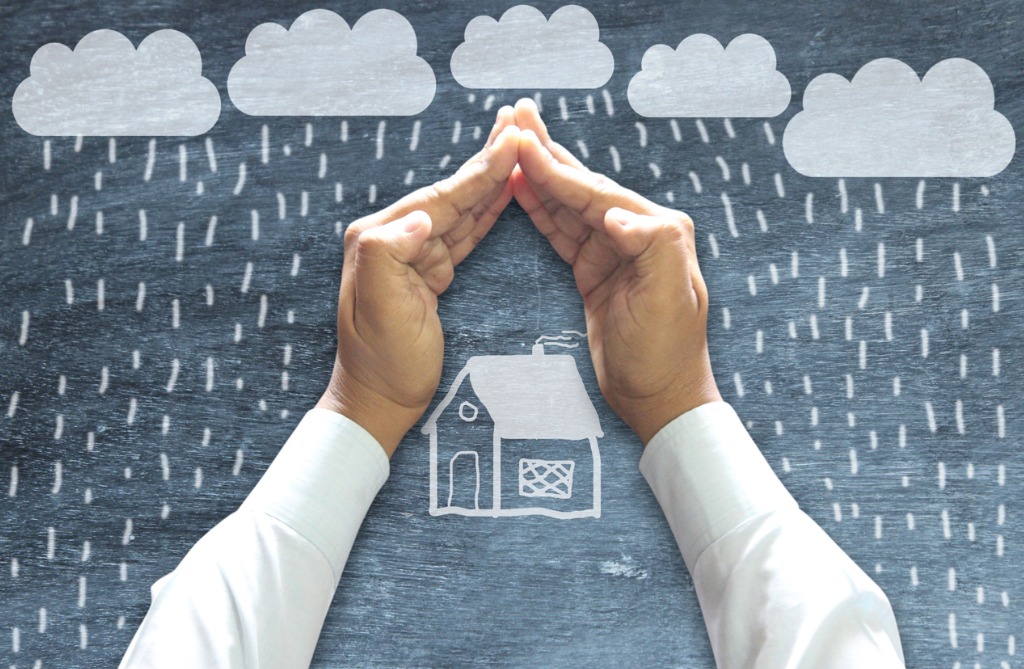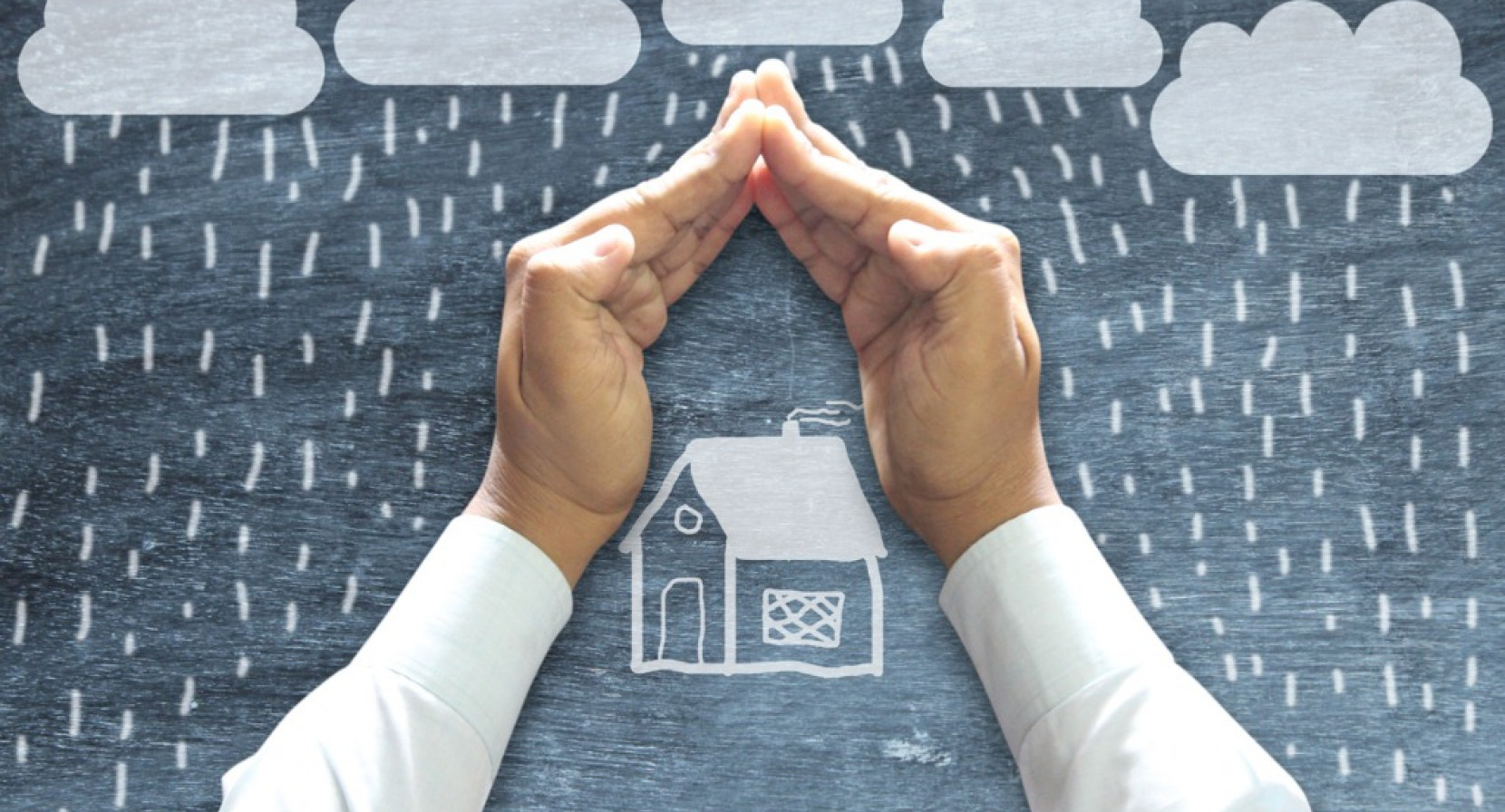Anywhere rain can fall, a flood can follow. Obviously, flooding is more likely in certain areas — such as near rivers and coasts — than in others. But low risk doesn’t mean no risk. Floods can occur even in seemingly unlikely places, as thousands of people who suffered flood damage in the wake of recent hurricanes Florence and Michael can testify.
Once inside a house, even a small amount of flood water can do a great deal of costly damage — to doors, walls, carpet, floors, insulation, and electric circuits. To make matters worse, subsequent mold and mildew must be remediated to make the home livable again.
Unfortunately, standard homeowners insurance provides no financial protection against flood damage. Homeowners insurance almost always excludes destruction and impairment caused by rising waters, i.e., a flood (or a related mudslide). The only financial protection is specific “flood insurance.”
Estimated Flood Loss Potential | |||
Source: FloodTools.com | |||
Interior Water Depth | Cost to Structure | Cost to Property | Combined Loss |
2” | $23,720 | $3,172 | $26,892 |
3” | $24,370 | $4,917 | $29,287 |
4” | $31,345 | $7,207 | $38,552 |
5” | $31,425 | $13,914 | $45,339 |
For decades flood coverage wasn’t available in the U.S. Companies stopped selling such insurance after the Great Mississippi Flood of 1927, a deluge that inundated 27,000 square miles and left hundreds of thousands of people homeless. By 1965, when Hurricane Betsy slammed into the Gulf Coast and the resulting storm surge and heavy rainfall flooded 165,000 homes, no one in the disaster area had flood insurance. It simply wasn’t being sold.
In response, Congress created the National Flood Insurance Program (NFIP) in 1968, authorizing the issuance of federally backed policies in communities willing to meet certain land-use and flood-control requirements. Today, NFIP insurance is available in more than 22,000 cities and counties. Homeowner policies cover up to $250,000 in damage to a house, plus another $100,000 for damage to contents (renters can get contents-only protection). Businesses can purchase up to $500,000 of coverage for building/contents.
Likely or unlikely?
Unless you live near the coast or along a river, the likelihood of a flood damaging your home or property isn’t great. But unlikely things do happen. The Federal Emergency Management Agency (FEMA) gauges the likelihood of flood risk and illustrates that risk via a series of “zone maps.” Zone A (near a river, stream, or lake) and Zone V (beachfront) are “Special Flood Hazard Areas.” In such places, property owners who get mortgage loans from federally regulated or insured lenders (i.e., most lenders in the U.S.) are required to buy flood insurance.
The premium rates in these zones can vary widely, depending on factors such as specific location, year of construction, number of floors, and deductible amount (ranging from $1,000 to $10,000). In some cases, flood insurance in Zone A or Zone V might cost only about $1,000 annually. In other cases, it could cost thousands of dollars more.
Of course, most people in the U.S. don’t live in areas at high risk for flooding. They live in minimal-to-moderate risk areas — FEMA’s “X,” “B,” and “C” zones — where flood insurance isn’t mandatory. (Find out which zone you live in via floodsmart.gov.)
NFIP’s “preferred-risk” policies for these areas have standardized premiums (see table below for 2019 rates), with deductibles ranging from $1,000-to-$1,250, depending on coverage amount. (Note: Separate deductibles apply to building and contents.)
How to buy flood insurance
Policies underwritten by the National Flood Insurance Program aren’t sold directly by the federal government. Instead, they are marketed and serviced via private companies — the government calls them “Write-Your-Own” companies — including Allstate, Liberty Mutual, USAA, and more than 50 others (approved companies are listed here).
2019 NFIP Rates for Zones X, B, C* | |
*These coverage amounts/rates also apply to specialized zones AR and A-99. Source: Federal Emergency Management Agency | |
Coverage Amounts — Structure / Contents | Annual Premium (not incl. fees/surcharges) |
$125,000 / $50,000 | $325 |
$150,000 / $60,000 | $345 |
$200,000 / $80,000 | $385 |
$250,000 / $100,000 | $415 |
Effective Oct. 1, 2018, FEMA began allowing companies that sell NFIP policies to also sell private flood insurance (i.e., not federally backed) as well — a consumer-friendly change expected to expand the availability of private policies, either as supplements to or replacements for NFIP policies. Another recent regulatory change allows NFIP policyholders to cancel federal flood insurance in favor of private insurance at any time, instead of having to wait until a renewal period. Both changes are part of FEMA’s effort to encourage private insurers to cover more flood risk.
Limitations of flood insurance
Flood insurance doesn’t cover water damage from plumbing malfunctions, home accidents, or water backups. Such incidents may be covered under standard homeowners insurance or may require additional endorsements to a homeowners policy. Check with your insurance agent or read your policy’s Declarations Page to find out if you’re covered for the following:
Overflow and discharge damage caused by water from a washing machine, tub, sink, dishwasher, water heater, or a burst pipe. Such incidents typically are covered under standard homeowners policies if incidents are “sudden and accidental” and not the result of inadequate maintenance.
Non-flood water/storm damage, such as that done by rainwater that enters a house as the result of storm-related roof or wall damage. This kind of damage usually is covered under a standard homeowners policy.
Sewer backup or water backup that may result from aging plumbing/sewer systems, tree roots that cause blockages, or a municipal pipeline that gets overwhelmed in a storm, thus forcing dirty water to flow back into a house. This type of coverage typically requires a policy endorsement and carries an additional cost ($50-$250 annually).
Your call
If you live in an area of low-to-moderate flood risk, deciding whether to buy flood insurance is a judgment call. You may never need it — or it could turn out to be a financial lifeline. Just bear in mind: anywhere rain can fall, a flood can follow.









